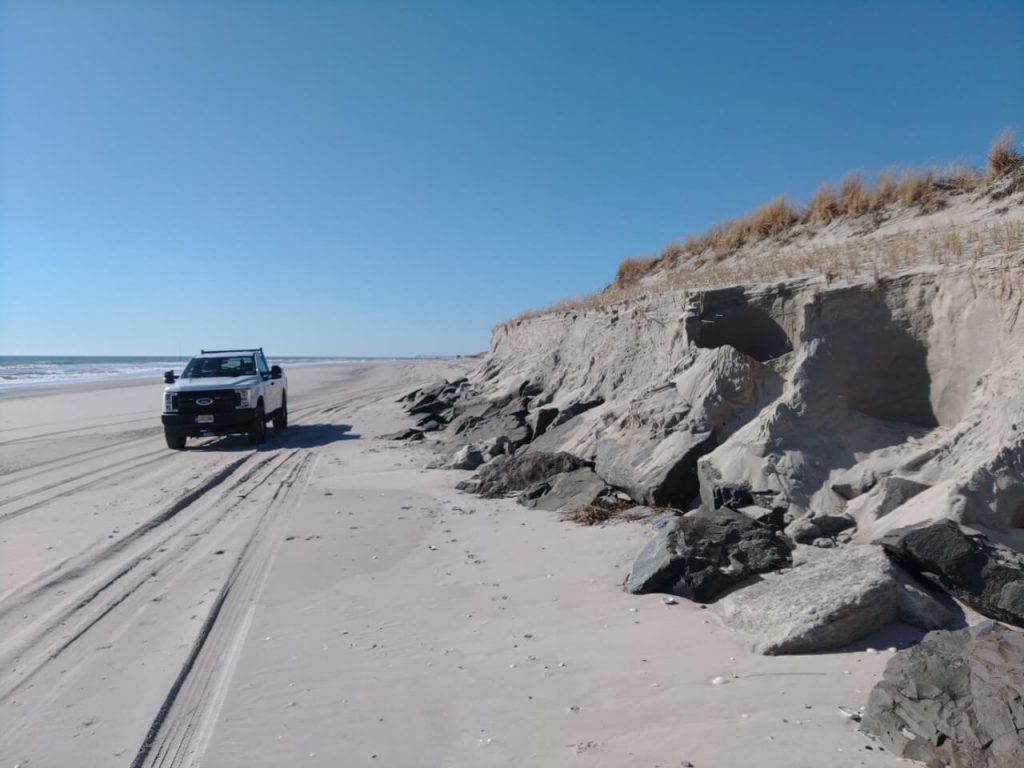AVALON – The U.S. Army Corps of Engineers and the New Jersey Department of Environmental Protection (NJDEP) held separate meetings with officials in Avalon and Stone Harbor recently concerning the imminent 2022/2023 beach nourishment.
Beaches in both boroughs are about to get much-needed sand, with Stone Harbor getting its first replenishment of sand since 2017. Avalon’s last federal replenishment was in 2019.
Since the initial federally sponsored construction of dunes and beach in 2002, Avalon has received 3.7 million cubic yards of sand and Stone Harbor 4.6 million cubic yards as part of the federal effort. It is an ongoing battle against the sea and wind, requiring periodic replenishments of what are essentially engineered beaches.
The goal of the Coastal Storm Risk Management effort is public safety and protection of lives and property, but the regular attention to the beaches has also become an essential element of the tourism-dominated economy of the county.
Complicating matters for the scheduled replenishment is a U.S. Fish and Wildlife interpretation of the Coastal Barrier Resources Act (CBRA), which U.S. Fish and Wildlife maintains does not allow the use of federal funds for mining sand from within a CBRA area designation for use in beach replenishment outside the CBRA area.
In short, sand from Hereford Inlet cannot be mined using federal dollars to support the nourishment of Stone Harbor beaches. This legal interpretation led to Stone Harbor being skipped in the 2017 replenishment.
According to information released from the Army Corps and NJDEP, the 2022/2023 replenishment will rely solely on sand from Townsend’s Inlet. If that remains the case, the sand will have to be piped most of the length of Seven Mile Island to reach beaches in Stone Harbor.
Townsend’s Inlet is the usual source of sand for Avalon beach replenishment, but it represents a costly option for the nourishment of Stone Harbor beaches.
Paying for the hydraulic beach fill usually follows a pattern in which the federal government covers 65% of the cost, leaving the remaining 35% to the state and local municipalities. A state aid agreement is negotiated with each municipality for the replenishment, with the state usually contributing 75% of the non-federally sponsored expense. The remaining cost to each municipality is 25% of the non-federally sponsored portion.
The Army Corps expects to solicit bids in September. The bid process will determine a final construction schedule. Congress has appropriated $15.5 million for federal support of the project. Factors that may impact this replenishment cycle include fuel inflation, which can drive up the cost of mining the sand, and the added expense associated with piping sand from Townsend’s Inlet onto Stone Harbor beaches.








